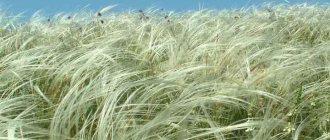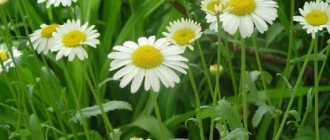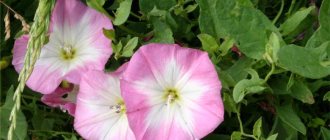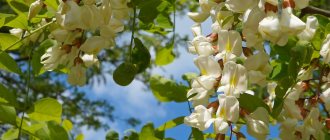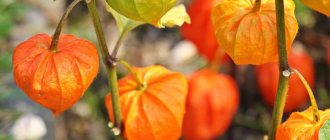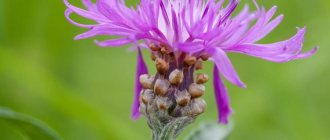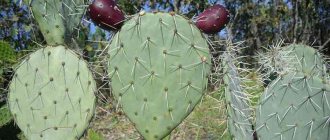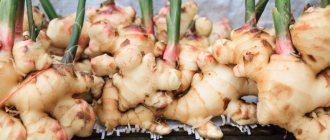It has a specific, recognizable, delicate, spicy aroma and light tart taste.
The benefits of St. John's wort have been known since the times of Ancient Greece and Rome. Hippocrates, Dioscorides, Pliny the Elder, and Avicenna wrote about him in their works. The medicinal properties of St. John's wort are recognized by official medicine for the treatment of diseases of the oropharynx, gastrointestinal tract, liver, kidneys, etc. Plant preparations have shown a good effect on skin diseases and various damage to the skin.
The pharmaceutical industry produces St. John's wort preparations - imanin and novoimanin, which are natural antibiotics. They are also used for skin diseases, respiratory diseases, etc.
In folk medicine, the herb St. John's wort is used much more widely, including for disorders of the nervous system, diseases of the genitourinary organs, joints, diabetes, etc. In complex therapy, the plant is used to treat some forms of cancer. In addition, the indications of St. John's wort for getting rid of alcohol addiction and smoking are interesting. It is used both independently and as part of many herbal preparations.
St. John's wort has found application in the alcoholic beverage industry and in the production of tonic drinks. The plant is included in bitter liqueurs “St. John’s wort”, “Balsam”, vodka, wine “Vermouth”, etc.
St. John's wort is also used in the food industry and cooking. As a seasoning, the plant gives fish dishes a specific spicy aroma and taste. The flowering herb St. John's wort (flowers and leaves) is a tea substitute.
St. John's wort is a honey plant.
Types and varieties
The genus St. John's wort is very numerous and its representatives have found application in a variety of fields. In addition to the St. John's wort species, it includes 457 species, including:
- St. John's wort – Hypericum erectum;
- St. John's wort – Hypericum ascyron;
- St. John's wort – Hypericum humifusum;
- graceful St. John's wort – Hypericum elegans Stephan ex Willd.;
- St. John's wort (hairy) – Hypericum hirsutum;
- St. John's wort – Hypericum maculatum Crantz;
- St. John's wort – Hypericum scabrum
- St. John's wort – Hypericum rumeliacum Boiss and other species
have similar properties and are used in folk medicine along with St. John's wort.
St. John's wort (Hypericum attenuatum), St. John's wort (Hypericum elongatum), St. John's wort (Hypericum quadrangulum L.), etc. also have medicinal properties.
Young shoots of Kamchatka St. John's wort (Hypericum kamtschaticum) are used as food, and the leaves and herbs are used to brew tea.
Many species are decorative, for example, St. John's wort (Hypericum androsaemum), St. John's wort (Hypericum calycinum), St. John's wort (Hypericum kamtschaticum), etc.
St. John's wort. Latin name: Hypericum perforatum L.
St. John's wort. Other names: common St. John's wort (holey, yellow), St. John's wort, hare's blood, red herb, Ivanovo's blood, valiant blood, krovtsa, bloodworm, aphids, Svetoyanskoe potion, etc.
Botanical description
St. John's wort is a herbaceous perennial. Height: 30-80, up to 1 m. The rhizome and roots of St. John's wort are thin, branched, underdeveloped, from which one or several stems grow annually.
The stem is vertical, straight, bare, dense, cylindrical, with two longitudinal edges, branched in the upper part.
The leaves of St. John's wort are small, opposite, sessile, smooth, oblong-oval, ovate, obtuse, entire. Length: 0.7-3.5 cm, width: up to 1.4 cm. They have numerous translucent light dots and rare black glands containing a coloring essential oil substance, which, when refracted under rays of light, gives the impression that the leaves are covered with holes.
The flowers are oblong-oval with a five-membered calyx and corolla. Collected at the tops of the stem and branches into corymbose panicles. Color: golden yellow, light orange with black-brown dots on the underside of the petals.
The fruit is an oblong-ovoid, three-locular, multi-seeded capsule that opens with three valves. The seeds of St. John's wort are small, oblong, fine-celled. Color: dark brown, dark brown. Length: about 1 mm. Weight of 1000 seeds: 0.12-0.14 g.
St. John's wort blooms in June-August. Rarely in the first year. Abundant flowering and fruiting begins in the second year. The fruits ripen in July-September.
Reproduces mainly by seeds and root suckers.
Growing on site
St. John's wort is perforated. Grows best in black soil and open sunny places.
St. John's wort can not only be harvested from nature, but also grown in your own garden. Seeds can also be taken from nature or you can purchase the Zolotodolinsky variety, specially bred for industrial cultivation. St. John's wort is a plant that does not require soil fertility, but in terms of the mechanical composition of the soil it is better to choose not heavy ones - sandy loam, light and medium loams. On heavy, floating and crusty soils, small St. John's wort seeds do not germinate well. The soil is dug up in advance, mineral and organic fertilizers are applied if possible (1 bucket of compost and 20-30 g of ammophosphate per 1 m2), all perennial rhizomatous and root shoot weeds are carefully selected.
Care
Care consists of weeding, loosening and regular watering. To prevent a crust from appearing, the soil is mulched with humus.
St. John's wort Reproduction
Reproduces mainly by seeds. The best sowing time is before winter (late October - early November). 25 days before sowing, the soil is dug up, 3-4 kg/m2 of rotted manure is added, as well as complex mineral fertilizers at the rate of 10 g/m2 of nitrogen, phosphorus, and potassium. If St. John's wort is sown in the spring, then the seeds are stratified in advance by mixing them with sand and keeping them in the cold for about 2-3 months.
You can sow St. John's wort in the fall, before winter, when the soil freezes, or in early spring (late April - early May). Seeds do not require pre-sowing preparation. It is better to sow seeds superficially in pre-made grooves or with shallow embedding, about 0.5 cm. The width between rows is 45-60 cm. To make the sowing more uniform, the seeds are mixed with 2-3 parts of dry river sand. If you pre-water the furrows during spring sowing, the seedlings will appear more friendly and faster. Another way to speed up the emergence of friendly shoots, especially in a dry spring, is to cover the crops with agril or plastic wrap. Of course, this advice is not applicable on large areas, but on your favorite pharmacy bed at your dacha it’s just right. When the seeds begin to germinate, the cover is removed. Shoots appear in 3-3.5 weeks. The first months of life the plants are very small and develop slowly. Therefore, careful weeding and loosening are necessary. If the weather is very dry, it is better to water them generously several times. But at the same time, it is necessary to pour out such an amount of water to thoroughly wet the top layer of soil by 10-15 cm, and loosen the surface so that the moisture evaporates less. By autumn, some of the plants bloom. In the spring, dry shoots from last year are cut off and, if necessary, on very poor soils the plants are fed with complex mineral fertilizers. In July it will be possible to collect raw materials. The yield is about 250 g of dry grass per 1 m2. It is not worth keeping St. John's wort in one place for more than 3 years - the yield is noticeably reduced. Therefore, when the plants reach 3 years of age, sow the next area. It will produce a harvest next year, and the old plot can be dug up in the fall. That's all the tricks for growing St. John's wort. Some plants can be left for seeds, and then the problem with seed material will be solved on your own. When the boxes turn brown, they are cut off and dried, spread out in a thin layer on paper. After this, they can be carefully crushed with a potato masher, which every housewife has in their kitchen, and sifted through a sieve. The seeds are ready for sowing.
Advice. St. John's wort can be placed in a mixborder or in a flower bed. And what’s surprising is that it looks very elegant.
Habitat
Where does St. John's wort grow? The plant is distributed in Western Europe, Africa, China, North America, as well as almost the entire territory of the CIS, including Belarus, Ukraine, the Caucasus, Western Siberia, and the southeastern mountainous part of Central Asia.
The habitat of St. John's wort is deciduous and pine forests, clearings, and forest belts. It can be found in forest clearings, edges, sandy, mountain slopes, hills, meadows, field edges, among bushes, along roadsides. Sometimes it forms sparse thickets.
St. John's wort is also cultivated as a medicinal plant.
What does St. John's wort look like in nature: photo
In nature, many of us have encountered St. John's wort. However, not everyone even knew what kind of plant it was. In summer, the tall stems are literally strewn with inconspicuous yellow flowers. Each of them contains 5 small petals. The leaves are small, oval in shape. A photo of the St. John's wort plant makes it possible to see exactly what it looks like and what distinctive features it has.
St. John's wort in nature
Dense thickets of St. John's wort immediately attract attention during a summer walk, but single plants may go unnoticed. Currently, not everyone even knows what kind of herb it is and what miraculous power it has.
Collection and preparation
For medicinal purposes, the above-ground part of the plant, less often the flowering tops, is harvested.
St. John's wort is harvested during the flowering period, before the fruit appears. The raw material is the herbaceous part 25-30 cm high, without the rough base of the stems, which is cut with a knife or sickle.
When collecting St. John's wort, you should not uproot the plants, as this will lead to their death. It is also necessary to leave some developed specimens for restoration.
Drying begins as quickly as possible, since the grass quickly warms up and then darkens when finished. Drying is carried out outdoors in the shade, under a canopy with good air ventilation, or indoors, spreading it in a thin layer (5-7 cm), remembering to turn it over often.
It is also permissible to dry the grass by tying it into small bunches, which are hung in the shade on a rope.
Finished dried St. John's wort raw materials are stored in boxes or bags made of natural materials in a dry, well-ventilated area. Shelf life of St. John's wort: 3 years.
Smell: balsamic, taste: bitter-astringent.
Chemical composition
The beneficial and medicinal properties are determined by the components in the chemical composition of St. John's wort. The aerial part contains essential oil - in the grass 0.1-1.25%, in flowers 0.47%, which includes alpha-pinene, myrcene, cineole, geraniol, resinous substances (up to 6%), saponins, and also vitamins P, PP, carotene, choline, ascorbic and nicotinic acids.
In addition, coloring substances (hypericin, pseudohypericin, franguloemodin, astranol, etc.), tannins (up to 13%), flavonol glycosides (hyperoside, quercetin, quercitrin), alkaloids, phytoncides, azulene, ceryl alcohol, etc. were found in the grass. also choline, carotene (up to 55 mg%), vitamins C, P PP.
The composition of St. John's wort flowers is as follows: carotenoids, resinous substances (17%), etc. The roots contain carbohydrates, saponins, alkaloids, coumarins, flavonoids, etc.
Macro- and microelements were also found in St. John's wort: potassium (16.8 mg/g), calcium (7.3 mg/g), magnesium (2.2 mg/g), iron (0.11 mg/g), as well as boron (40.4 µg/g), cadmium (7.2 µg/g), molybdenum (5.6 µg/g), selenium (5 µg/g), zinc (0.71 µg/g), copper (0.34 µg/g), etc.
Cosmetics recipes
Flowers or leaves of St. John's wort can be used not only for pharmaceutical purposes, but you can also prepare wonderful masks and decoctions for the face from these components yourself. After all, the plant can help a woman achieve beautiful and healthy skin.
The possibilities of St. John's wort are so wide that they allow it to be used in various beauty recipes.
The plant is purchased not only at the pharmacy, but also collected independently. At home, having only available means, you can prepare healing decoctions, infusions, masks and face creams.
Effective products for the care of problem, combination or inflammatory skin:
- To normalize the functioning of the sebaceous glands, you should use St. John's wort tincture. It is prepared from 2 tablespoons of herbs and 250 ml of boiling water. After 30 minutes, the mixture is ready, filter it and wipe your face. Within a week, the skin will become drier and the inflammatory process will go away. To maintain the positive effect, you need to wipe your face morning and evening for 30 days.
- To get rid of oily shine and enlarged pores, you should use an infusion of this plant, frozen in the form of cubes. The decoction is made in accordance with the previous recipe and poured into special forms. They are then placed in the refrigerator until frozen. Use the cubes daily after washing your face in the evening, wiping the skin with them. Regular use will tighten pores and rejuvenate the skin. In addition to the results obtained, the appearance of acne will decrease, fine wrinkles will smooth out, and the facial contour will be tightened. To enhance the effect, you can add eucalyptus and sage herbs to the cubes.
- For dry skin, you can prepare a cream. You need to take 30 g of the plant and butter, a few drops of the juice of one lemon, and then mix. Apply to facial skin before bed.
- For dry skin, use a nourishing mask containing 10 g of St. John's wort, 1 yolk and several tablespoons of carrot juice. The product is applied to a cleansed face and left for a quarter of an hour. Then the mask is removed and a nourishing cream is applied.
- To prepare anti-wrinkle lotion, you need to take a glass of infusion and a tablespoon of vodka. After washing, you should wipe the skin of the face, décolleté and neck with the resulting product.
- Heel bath. Pour 100 g of dry plant with a liter of hot water. Boil for 5 minutes. Pour the broth into a convenient container and begin bathing procedures for your feet.
Regular use of plant-based cosmetics will make your facial skin glowing and healthy.
Use in folk medicine
A large number of people, freely using plants to treat various diseases, believe that they are absolutely harmless. However, among medicinal plants there are potent, toxic and even poisonous ones. In addition, many people, especially older people, have several chronic diseases.
Therefore, in order for the treatment to be effective, when using it, one should take into account the beneficial and medicinal properties of St. John's wort and the contraindications that it has, and this can only be done by a doctor. Based on this, before you start taking St. John's wort preparations, consult a doctor, or better yet, a herbalist you trust. The information given below is for informational purposes only.
Important! The information presented in the material is for informational purposes only. Before use, be sure to consult a specialist.
Cardiovascular diseases
The benefits of St. John's wort have been used for the prevention and treatment of cardiovascular diseases. A decoction, infusion, or tincture of the plant improves blood circulation, especially venous circulation, and blood supply to certain organs, and strengthens capillaries. Relieves spasms of blood vessels and capillaries.
Since St. John's wort increases blood pressure, its preparations, including juice, are prescribed for hypotension. It also stimulates cardiac activity and is used for certain heart diseases, such as heart failure, etc. In the latter case, in addition to the traditional herbal decoction, an infusion of St. John's wort inflorescences is used.
For hemorrhoids, the decoction is used in the form of baths and enemas.
For the head
As an antispasmodic and analgesic, St. John's wort decoction and juice are drunk for headaches, especially those caused by stress and nervous tension.
The pharmaceutical drug Novoimanin is prescribed for ear diseases.
Colds and bronchopulmonary diseases
Traditional medicine widely uses the beneficial and medicinal properties of St. John's wort for the treatment of respiratory diseases. A decoction and solution of alcohol tincture is used for gargling, including for sore throat. In addition, they are used for rinsing the nose, both as hygiene procedures and for sinusitis. Also, for sinusitis, the nasal cavity is additionally lubricated with St. John's wort oil.
The decoction, infusion, and juice are drunk for colds and pulmonary diseases, including tuberculosis, cough, bronchial asthma, etc. An infusion of inflorescences is also recommended for coughing and choking. For tuberculosis, treatment with St. John's wort in the form of a decoction in white wine gives a good effect.
Aerosol/steam inhalations with St. John's wort preparations, including the pharmaceutical drug novoimanin, are very powerful. In addition to traditional diseases of the oropharynx, these procedures have worked well for bronchitis, lung diseases such as pneumothorax, abscess, purulent pleurisy, purulent lesions of the pleura, etc.
Gastrointestinal diseases
The beneficial and medicinal properties of St. John's wort are effective for both the treatment and prevention of diseases of the gastrointestinal tract. The plant improves appetite, normalizes digestion and intestinal motility.
Preparations of St. John's wort - decoction, infusion, juice, have an astringent, anti-inflammatory, antiseptic effect, promote tissue regeneration, and relieve intestinal spasms. St. John's wort is recommended for treatment of gastritis, hyperacidity, stomach and duodenal ulcers, gastric catarrh, colitis, diarrhea, including bloody diarrhea, dysentery, flatulence, and helminthic infestation.
St. John's wort oil is a highly effective means of versatile action. It is used as a wound healing agent for peptic ulcers of the stomach and duodenum. Essential oil is used for the same purposes.
St. John's wort seeds have a laxative effect.
For the liver
St. John's wort has great benefits for the liver. Plant preparations have an antispasmodic effect on the smooth muscles of the bile ducts, which increases the outflow of bile and prevents its stagnation in the gallbladder. As a result, the possibility of stone formation is prevented.
As a medicine, St. John's wort (decoction, juice) is used for some diseases of the liver and gall bladder, such as bile stagnation, cirrhosis of the liver, jaundice, cholelithiasis, etc.
Kidney and bladder diseases
The beneficial and medicinal properties of St. John's wort and its use are recommended for the treatment of certain diseases of the kidneys and bladder. Internal administration of plant preparations has an anti-inflammatory effect, relieves spasms of the ureter, increases filtration in the renal glomeruli and, as a result, increases diuresis (urination).
St. John's wort decoction and juice are taken for kidney bleeding, kidney and urolithiasis, cystitis, bedwetting, including in children, etc.
For edema, both internal and external use of St. John's wort is used. Fresh herbs are crushed using a meat grinder or blender. The resulting mass is applied to the sore spots in the form of overlays and then secured. The use of juice, St. John's wort oil for lubrication, lotions, etc. is also effective.
Oncological diseases
In complex therapy, traditional medicine uses St. John's wort preparations to treat cancer. The decoction is taken for cancer of the stomach, liver, and ovaries.
For breast cancer, lotions from St. John's wort vodka tincture are applied to the affected breast 2-3 times a day. Duration 20-30 minutes.
St. John's wort leaves crushed using a meat grinder or blender in the form of patches are effective against malignant ulcers. For skin cancer, applications with St. John's wort oil are made to the affected areas as often as possible.
For the nerves
St. John's wort recipes have a positive effect on disorders of the nervous system, such as neurasthenia, nervous convulsions, restless sleep, overwork, etc. Taking a decoction or infusion relieves nervousness, fatigue, and has a stimulating effect.
For women
St. John's wort is widely used in gynecology. The decoction and juice are drunk for uterine bleeding, menorrhagia, inflammation of the genital organs, sexually transmitted diseases, etc.
For cervical erosion, tampons with oil have a good effect. For mastitis and mastopathy, lotions are made from a decoction of St. John's wort on the sore breast and lubricated with oil. Also, for mastitis, the already mentioned pharmaceutical preparations Imanin and Novoimanin are recommended externally.
For men
For men, St. John's wort is of interest as a remedy for the treatment of prostatitis.
Joint diseases
The plant has a good effect on joint diseases. What does St. John's wort treat? Decoction, infusion, juice are drunk for radiculitis, gout, arthritis, sciatica, rheumatism, neuritis, inflammation of the sciatic nerve, convulsions, etc. For arthritis, lotions and rubbing are also done at the same time.
Also, for rubbing against joint diseases, a mixture consisting of St. John's wort and mustard oils, camphor and turpentine is prescribed.
Skin diseases
Both official and traditional medicine recommends St. John's wort for various skin diseases, such as eczema, psoriasis, pyodermatitis, vitiligo, allergic diseases, strepto-staphyloderma, panaritium, scrofula (scrofula), phlegmon, boils, carbuncles, etc. Treatment is usually carried out comprehensively, taking St. John's wort, both internally and using externally in the form of lotions, washings, rubbing, etc.
Also for these purposes, the already mentioned pharmaceutical drugs imanin and novoimanin are used.
Wounds, cuts, burns
As an effective antimicrobial, antiseptic, bactericidal, anti-inflammatory, wound-healing, analgesic agent, St. John's wort is of great use for the treatment of various damage to the skin, such as gangrene, abscesses, some forms of osteomyelitis, ulcers, including trophic ones, 2nd and 3rd degree burns, wounds, including including infected, cracks on the lips, hands, nipples, paronychia, etc. St. John's wort oil, including essential oil, is most often used. A decoction, infusion, or tincture solution is used for washing, rubbing, lotions, etc.
For burns, it is recommended to lubricate the damaged surfaces with a mixture of beaten egg whites and St. John's wort oil (for 5 whites, 2 tablespoons of oil).
The already mentioned drugs imanin and novoimanin are also applicable for these purposes. In addition, along with St. John's wort oil, they are used in postoperative practice. St. John's wort oil helps with burns when 2/3 of the body surface is affected.
↑ St. John's wort preparation imanin
Ukrainian academician Viktor Grigorievich Drobotko and his students obtained a good medicinal preparation from the phytoncides of the plant St. John's wort, called imanin.
St. John's wort is an ancient folk medicinal plant. Gastrointestinal diseases were treated with decoctions and infusions from it. In a very simple way, you can obtain a medicinal phytoncidal preparation, imanin, from plant tissue. It is a dark brown powder; it is not afraid of strong heat. Imanin is not just one substance, but a whole complex: tannins, chlorophyll and others. Its solution in water has medicinal properties.
Using forty types of microorganisms, scientists have proven the bactericidal effect of imanin - on staphylococci, streptococci, the culprits of dysentery, tuberculosis, whooping cough and many other bacteria. So, after 4 hours, regardless of the number of staphylococci, diphtheria and whooping cough microbes, they all die under the influence of imanin. Fungi are not susceptible to the action of imanin.
They are resistant to imanin and protozoa; they even reproduce better in its solutions, however, in the case of small concentrations. Doctors became interested in the properties of imanin; moreover, it can be given to a sick body in very convenient forms - both in the form of solutions (in water, alcohol), and in the form of ointments, and in powder form. Various diseases can be treated with imanin. An acute runny nose goes away within a few hours after giving imanin to the patient. Iman successfully fights purulent inflammations of the ear, and doctors have achieved especially amazing success in the treatment of burns. Imanin helps restore lost tissue. When it treats burns, it does not leave disfiguring scars.
Science knows the fact that Iman saved a person after a very severe burn. But an accident happened to a two-year-old child: the entire lower half of the body and both legs were scalded with boiling water. One third of the entire surface of the body was burned! The child was taken to the hospital in very serious condition: with a temperature of more than 39 degrees, a pulse of 130 beats per minute and poor blood condition. Treatment with imanin was started immediately. Already on the third day, the skin condition improved, the temperature and blood became normal, and after 12 days the body, with the help of imanin, completely coped with the severe damage to a third of the entire body!
Dosage forms
Decoction
10 gr. (1.5 tbsp) pour 200 ml of St. John's wort raw material. hot water. Bring to a boil and simmer over low heat for 30 minutes. Remove from heat, cover with a lid, insulate and leave for 10 minutes. Strain, squeeze out the raw materials. Using boiled water, bring the resulting broth to its original volume. Store for no more than two days in a cool place, such as a refrigerator.
Take 1/3 tbsp. three times a day half an hour before meals.
Tincture
Place crushed St. John's wort herb in a glass container (preferably dark glass) and pour in high-quality vodka or 70% alcohol in a ratio of 1:5. Close the container tightly with a lid and leave in a dark place at room temperature for a month, remembering to shake periodically. Strain, squeeze out the raw materials. Shelf life of St. John's wort tincture: 4 years.
Take 40-50 drops in a small amount of water 3-4 times a day. For rinsing, dissolve 30-40 drops in 1/2 tbsp. boiled water.
Oil
200 gr. fresh herbs, or better yet St. John's wort inflorescences, pour 400 ml. unrefined sunflower oil (preferably olive oil). Knead the raw materials tightly; under no circumstances should they protrude above the surface of the oil. Otherwise, mold will appear, and this cannot be allowed.
Close the container tightly with a lid and leave in a dark place at room temperature for 2-3 months, remembering to stir periodically. You can use the oil after 3-4 weeks. Strain, squeeze out the raw materials. Store in a dark, cool place
St. John's wort oil is close in its medicinal properties to sea buckthorn oil.
Juice
St. John's wort juice is obtained from the fresh above-ground part of the plant (without stems), collected in June-July. The grass is washed well and crushed using a meat grinder or blender. Squeeze out the juice from the resulting mass using gauze.
Take 1 tbsp. juice mixed with the same amount of natural honey, three times a day half an hour before meals.
Juice from fresh grass contains 1.5 times more active ingredients than St. John's wort tincture.
Contraindications
In order for the treatment to be beneficial, it is necessary to take into account the medicinal and beneficial properties of St. John's wort and the contraindications that it has.
Some sources and authors classify St. John's wort as a poisonous plant, which requires caution in use and adherence to the exact dosage. If the concentration and/or amount of plant preparations taken is exceeded, illness may occur. Side effects of St. John's wort include:
- headache,
- loss of appetite,
- nausea,
- vomiting
- constipation,
- discomfort in the liver area,
- feeling of bitterness in the mouth,
- decreased sexual function,
- hives
Although St. John's wort is recommended for the treatment of gastritis with high acidity and stomach ulcers, in case of an overdose severe cramps and pain are possible.
Also, long-term treatment with St. John's wort should not be carried out. It is necessary to take breaks.
Since the plant raises blood pressure, in case of hypertension, St. John's wort should be taken in the form of preparations or should be completely abandoned.
According to some authors, St. John's wort is contraindicated during pregnancy and fever. Does not mix well or does not mix well with some foods and medications.
St. John's wort contains substances that have a photodynamic effect, i.e. increasing the absorption of ultraviolet rays by the skin. However, they retain their properties only in alcohol/vodka tinctures and plant juice.
Therefore, after internal and especially external use of plant preparations, you should refrain from exposure to the sun. Otherwise, sunburn or dermatitis may occur. Blondes and people with delicate skin should be especially careful.
Despite the above, there are recommendations from some authors to refrain from sun exposure after taking any preparations of St. John's wort.
Medicinal properties
St. John's wort contains many useful substances, vitamins, minerals, and antioxidants. The medicinal plant has a beneficial effect on the entire human body:
- strengthens the immune system, saturating it with vitamins A, B, C, E, PP;
- improves the functioning of the gastrointestinal tract;
- has antibacterial, anti-inflammatory, disinfectant, analgesic effects;
- calms the nervous system, normalizes sleep, increases performance;
- treats skin diseases;
- thins the blood, prevents thrombosis;
- For preventive purposes, use the decoction for cardiovascular diseases, headaches;
- increases potency in men.
When treating a particular disease, it is necessary to remember that everything good should be in moderation. To exclude complications, it is necessary to know an accurate diagnosis.

